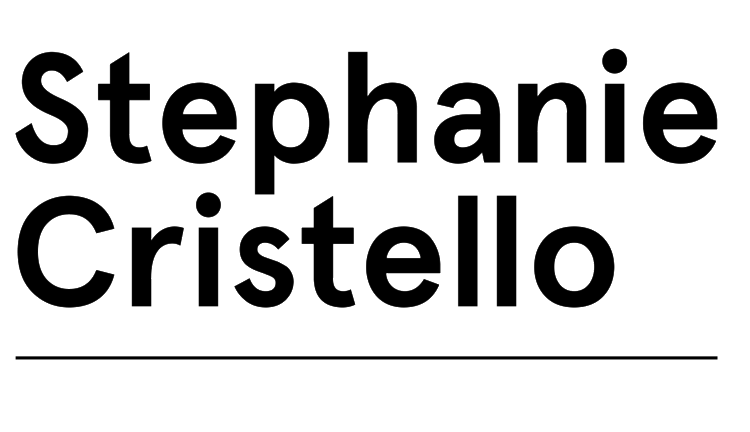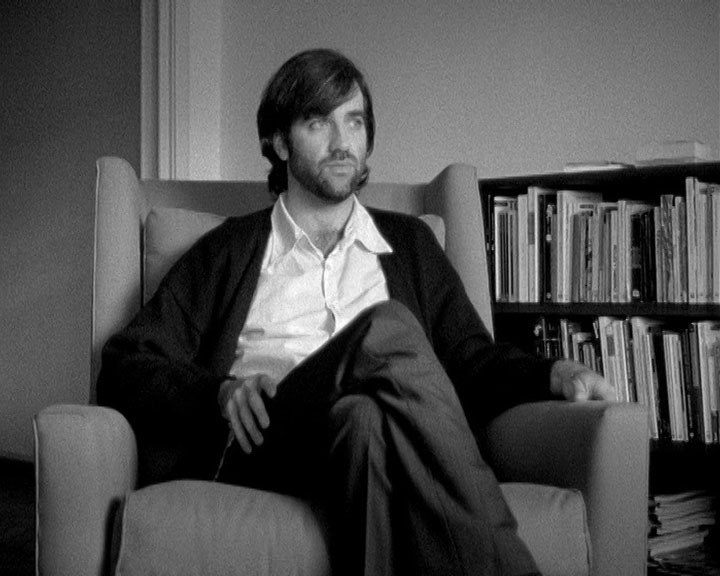Alejandro Cesarco: Musical Grammar
Published in THE SEEN Issue 06 (Spring/Summer 2018)
When a piece of classical music is played, we intuitively attach its melody to the name of the composer—not the pianist who performs its variation. For example, on this present flight to Hong Kong, where I am listening to Chopin’s Sonata No. 2 in B flat minor by ‘Unknown Artist.’ While the rendition is not entirely inconsequential (its fluent funereal phrasing, somber crescendos, and the delicate denouement centered in the ground of the refrain, like a light patch of spring grass visible through the snow), it is not necessary to the listener’s ability to recognize the work, which first and foremost belongs to the composer. By distinction, it is Chopin. Ideally, the role of the performer is that of an absent author, or a translator of a novel— invisible, but lithe enough to deliver the story intact. Within this literary framework, it is useful to consider the format of a song in the context of an instructive text, as both carry an inherent grammar (scores are notations, punctuated like sentences) that allows for replication and adaptation. Each additional execution or recording of a song adds to the mythology of its composer, and the sheet music tells you how.
In this regard, the position of the classical composer is not so different from that of the conceptual artist, whose work makes use of systems and structures to remove the hand of the maker, yet also resolve a varied output of work under the guise of a single name. In the work of New York-based artist Alejandro Cesarco, I am reminded of his most recent film work on view as part of his exhibition, Song, at the Renaissance Society at the University of Chicago, which was revisited, restaged, and recomposed. An actor appears in one film, Everness (2008), as well as its remake, Revision (2017), nearly ten years later. The repetition of the actor, paired with his seemingly autobiographical familiarity with the text, would lead many viewers to believe him for the artist. Yet the film is Cesarco, just as Sonata No. 2 is Chopin. In this sense, Cesarco is a type of composer for his own practice, whose structural and methodological approach both embraces and distances the artist from the final work—a type of hard to place, yet intimate, familiarity that one feels when they hear a chorus or refrain from a song whose words they can no longer remember.
While adopting the form of a song for this exhibition, Cesarco’s work more broadly relates to questions of affect, memory, and repetition. The following interview weaves through themes of lyricism and language, genre and melodrama, and the musicality of looking.
Alejandro Cesarco, Vanitas (From Remorse to Regret), 2017. Installation view, Song, at the Renaissance Society at the University of Chicago. Four archival inkjet prints. 29 x 45 inches. Photo: Useful Art Services. Courtesy of the artist and Tanya Leighton, Berlin.
––
Stephanie Cristello: I wanted to start with your relationship to lyricism in your work—but specifically the attention to the language of music, as a linguistic and conceptual structure. I recently wrote a text on Barbara Bloom’s Scores series, where images are scattered in a composition against the backdrops of stanzas. In speaking about her work, many of the terms in music were the same as the terms of the image; i.e. “tone,” “composition,” “tempo,” “pitch,” and “syncopation.” How would you say your practice marries the language of music to the language of analyzing the images, products, and contexts it presents? Is there a musical “grammar” you relate to, even if on a theoretical level?
Alejandro Cesarco: It is curious that you bring up Barbara Bloom, as she is a good friend and someone whose work I admire greatly. In her case, the “marriage” of music and visual arts also mirrors her personal life, as she is married to Chris Mann. The same is true of Lynne Tillman, whom I invited to take part of the public programs surrounding the exhibition at The Renaissance Society, and to contribute to the catalogue, and who is married to David Hofstra, a bass player. I had not made these connections until you asked the question.
My understanding of music is very amateurish and intuitive, with no formal training and no theoretical background. I think that by naming the exhibition Song, I wanted to signal to a form associated with carrying affect, and to how that may relate to questions of memory. I was thinking of how a song may work in a soundtrack to both set a mood or a tone, but also carry forward or anticipate narrative development.
By titling the show Song, I was also trying to hint at the relationship between the structural composition of a song, particularly the use of chorus or refrain, and some of the methodological moves employed in the works. I like your idea of a “musical grammar.” Perhaps a different way of saying that, is that through these allusions to notions of tempo, phrasing, duration, repetition, etc., the show also explores the musicality of looking.
In terms of my relationship to the lyric, perhaps it is most efficiently summed up by referring to the epigraph to Personal Pronouns, a text by Wendy Tronrud about my recent video, The Inner Shadow (2016). She quotes from J. Mark Smith’s, “Apostrophe, or the lyric art of turning away,” in which he writes, “[E]very instance of lyric is coincident with a movement of speech that describes a repeated swerve of longing towards the third.”
Alejandro Cesarco, Everness (Excerpt), 2008/2017. 16mm film transferred to digital video, black and white, sound. 3 minutes 10 seconds. Courtesy of the artist and Tanya Leighton, Berlin.
SC: I am interested in the melodramatic aspect of your work — how would you say that affect has figured in the pieces you have on view in Song, such as the video Everness? I see your work as melodramatic as the same way I see Godard’s films — each of them has their hook (the “fallen-woman” of Vivre sa Vie, the “fugitive-couple” of Pierrot le Fou). What would you categorize this film, or your other works?
AC: I have always been interested in the question of how meaning is felt. Or, to say it somewhat differently, how do we give shape to meaning (be it physically, narratively, etc.). So perhaps this is a concern with genres, and their uses.
To my mind, a genre could perhaps be more broadly defined as a perspective through which to read. Genres organize experience, in the sense that each genre, in some way, attempts to explain an aspect of our lives. For example, film noir may be regarded as a device through which to think through the relationship between subjectivity, the law, and truth. Science fiction, on the other hand, could be understood as a tale of the future placed in the past, and often a way through which to think about the other. And melodrama is perhaps a moral tale expected to teach us something about passion and love, and family.
For Giorgio Agamben, “[g]enres provide an affective expectation of the experience of watching something unfold.” Genres are thus the conventions of relating fantasy to ordinary life. Following this, could we make the leap to consider fiction as, among other things, the means by which people hold on to and perpetuate idealizations?
SC: I think we could—and even further, how much do you think the expectation, or experience, of a viewer can be manipulated? Is every avenue of interacting with art an inherent idealization, or is there a point of exhaustion? How do you define your use of the notion of this idealism being perpetual?
AC: I think this directly relates to how academic and author Lauren Berlant characterises ‘cruel optimism’: something that you desire is actually an obstacle to your flourishing. Whether perpetual or not, it would seem that holding onto idealizations too firmly might be a way of both working towards a desired outcome and simultaneously getting in its way.
As to the first part of your question, yes—the viewer is manipulated. Artworks employ different forms of seduction, in the sense that they attempt to divert the viewer from their truth.
SC: It appears in your practice that an authentic experience is shaped through various mediated elements, be that through script or staging—a sort of truth via fiction method. Would you elaborate on this approach?
AC: A first possible reply would be that every attempt at writing the self is both an experience and a consequence of discourse. In other words, we are mediated by the words of others. Writing (or authoring any form of text) is, in many ways, an archive of reading. We are a memory that acts. This archive of reading—this politics of placement and alignment with previous texts (or artists, or works)—this adopted genealogy, is both the place from where we speak and, in some ways, whom we speak to.
SC: Can you speak a bit about the element of performativity in the films included in Song? Specifically, I am interested in how the video works are scheduled or synced and unfold for the viewer in space. How was the timing determined, and what were the parameters for the narrative?
Alejandro Cesarco, Interlude, 2017. 8mm film transferred to digital video, color, sound, continuous loop. 2 minutes. Courtesy of the artist and Tanya Leighton, Berlin.
AC: There are three videos in the show that are sequenced one after the other to perform a narrative. There is an excerpt from Everness (2008) in which a character attempts to enunciate a definition of tragedy; a remake of that excerpt with the same actor, now ten years later, titled Revision (2017), and in which almost the same text is recited but with a verb tense shift (from present to past); and Interlude (2017), a very brief portrait of a woman, or a memory of that woman, with a piano solo by Sun Ra as soundtrack.
What is performed, or triangulated, (but only very subtly hinted at) in the sequencing of these three works is the difference between who we are and who we had hoped to become. What is in retrospect tragic, in this particular context, is the misreading of a situation and how it has informed a particular decision or action. A self-reproach for having gotten it wrong.
––
Alejandro Cesarco (b. Montevideo, Uruguay, lives and works in New York) utilizes different formats and strategies to address his recurrent interests in repetition, narrative, and the practices of reading and translating. Recent solo exhibitions include: The Measures of Memory, Raffaella Cortese, Milan, (2017); The Inner Shadow, A Tale of a Tub, Rotterdam (2016); Prescribe the Symptom, Midway Contemporary Art, Minneapolis (2015); Loyalties and Betrayals, Murray Guy, New York (2015); Secondary Revision, Frac Île-de-France/ Le Plateau, Paris (2013); A Portrait, a Story, and an Ending, Kunsthalle Zürich (2013); Alejandro Cesarco, mumok, Vienna (2012); A Common Ground, Uruguayan Pavilion, 54th Venice Biennial (2011); One without the Other, Museo Rufino Tamayo, Mexico City (2011); and Present Memory, Tate Modern, London (2010). Group exhibitions include: Question the Wall Itself, Walker Art Center, Minneapolis (2016); Under the Same Sun, Solomon R. Guggenheim Museum, New York (2014); Tell It to My Heart: Collected by Julie Ault, Museum für Gegenwartskunst, Basel (2013); and The Imminence of Poetics, 30th Bienal de São Paulo (2012). Cesarco is Director of the non-profit arts organization Art Resources Transfer.
Installation view, The Renaissance Society, 2018.





